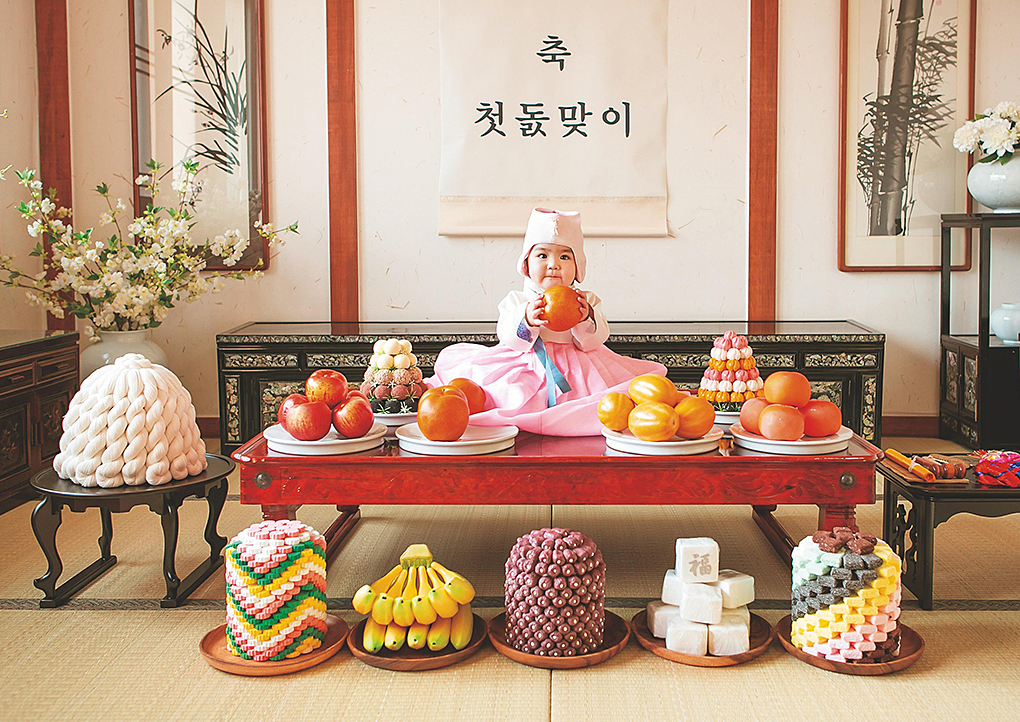A photo sent to my cell phone is a welcome reminder of my granddaughter’s first birthday party. It took place on a sparkling day last June in a hotel banquet room. After much coaxing, she had surrendered to a traditional cap (jobawi) placed on her head. Then she tossed it off. Two small tables held rice cakes, fruit and colorful objects on a tray. A pouch embroidered with peonies and a decorative red sash were also laid atop an abundant coil of thread.

© Yang Jun-seok
A golf ball on the tray captured my granddaughter’s attention, but her mother intervened. Removing the ball, she muttered, “What’s this thing doing here?” Presented with the tray again, my granddaughter beamed and picked up a large toy microphone.
In Korean tradition, the banquet held to celebrate a baby’s first year of life is called doljanchi. Dol means first birthday, signifying completion of one full cycle of 12 months, and janchi is a banquet or party. In the past, when basic needs for life were in short supply, many babies did not live to see their first birthday. Those who did were celebrated at a family banquet. Going on to have one of the lowest infant mortality rates in the world did not end this rite of passage.
The highlight of the day is doljabi. This is when the baby’s future is predicted by an object that the child plucks from a tray. Objects representing health and longevity include a skein of thread, noodles, white rice cake (baekseolgi) and sorghum cake balls covered in red beans (susu patteok). Money, of course, foretells wealth.
Items such as paper and a writing brush, books and ink, a bow and arrow, and mapae (a horse requisition tablet bestowed upon public servants of the Joseon Dynasty) were typically placed in front of boys. For girls, housekeeping-related items were added, such as needles, scissors and an iron, spools of thread and cloth. But these days no such distinction is made. Instead, for both boys and girls, modern-age doljabi objects often include a golf ball, microphone, stethoscope, judge’s gavel, and even a computer mouse.
As I imagined the future of my granddaughter who picked the microphone, I suddenly recalled what her mother – my daughter – had chosen some 30 years before. Reaching beyond the assorted objects displayed before her, my daughter snatched up one of the rice cakes stacked behind the mélange and took a big bite out of it. Perhaps that’s why she is now the happy mother of several children, with plenty of food on the dinner table.